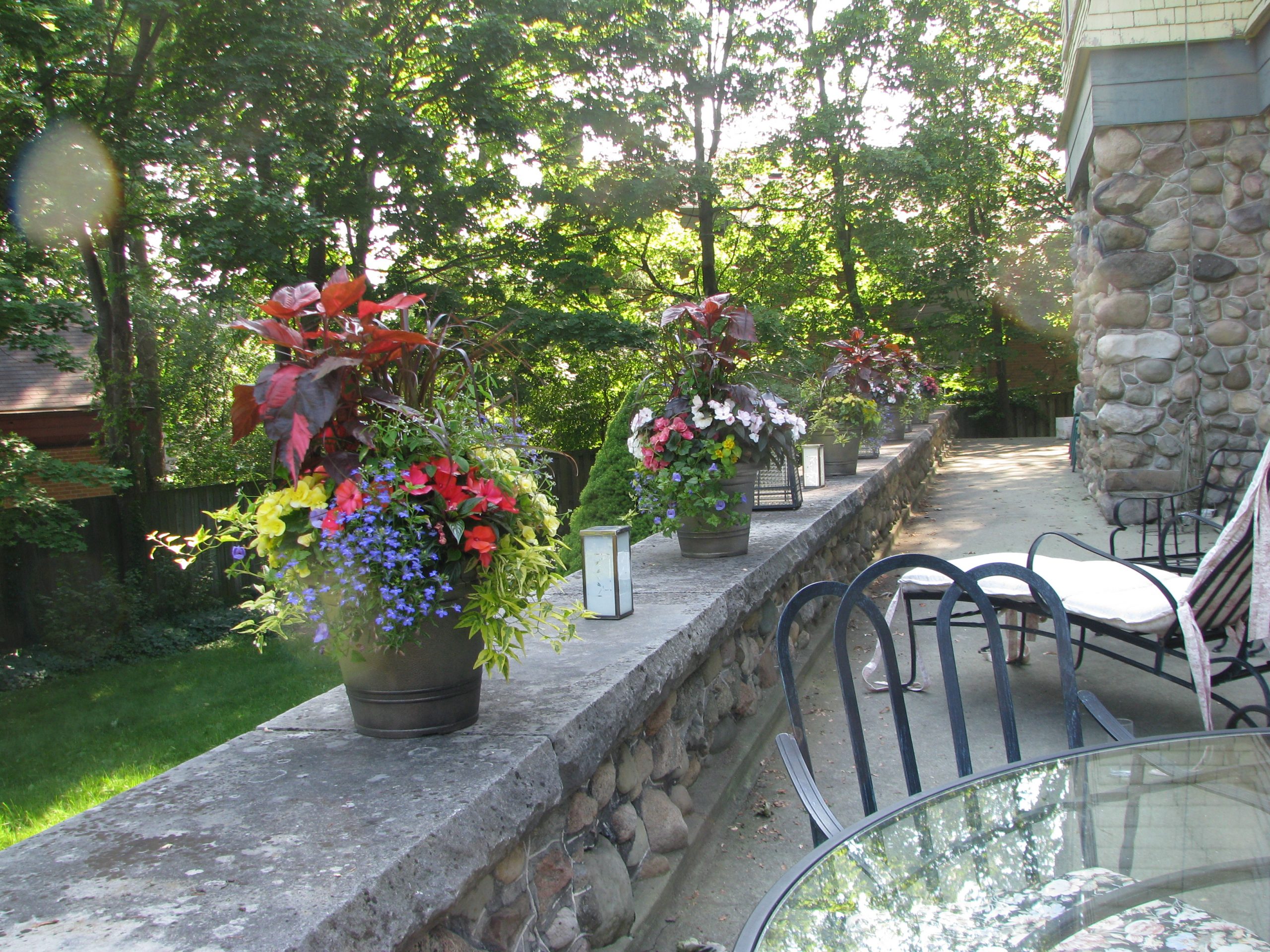The following is an excerpt from Little – A Family Reunion, 1979.
Hazelden
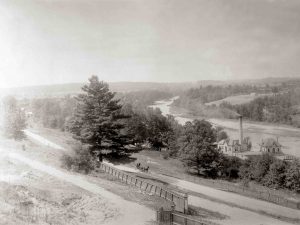
In 1892 John W. Little bought as a site for his summer home a farm property of some 90 acres a few miles west of London on the Thames River. It is believed that at least part of the property was formerly owned by the Elson family. Edyth Little’s maternal grand-mother Hily Wade was a member of the Elson family. The property was named Hazelden because of the proliferation of hazelnut bushes.
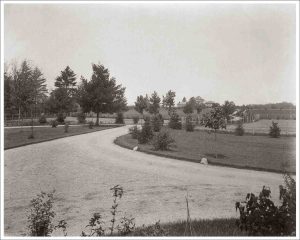 In those early days, before the automobile was much in use, the horse and carriage drive out the “River Road” (now Riverside Drive) to this farm was a significant journey. Moving out to the farm for the summer was really considered to be getting well away from the hustle and bustle of city life — no need for cottages on Lake Huron or in Muskoka in those days. From the start, the farm had stables for the horses, a barn to house some cattle and pigs, and a chicken house. There was a large kitchen garden which produced an enormous quantity of vegetables of all kinds and a big orchard. There were three cottages on the property for the head gardener and other outside help, drive sheds, storage sheds, and later a large greenhouse.
In those early days, before the automobile was much in use, the horse and carriage drive out the “River Road” (now Riverside Drive) to this farm was a significant journey. Moving out to the farm for the summer was really considered to be getting well away from the hustle and bustle of city life — no need for cottages on Lake Huron or in Muskoka in those days. From the start, the farm had stables for the horses, a barn to house some cattle and pigs, and a chicken house. There was a large kitchen garden which produced an enormous quantity of vegetables of all kinds and a big orchard. There were three cottages on the property for the head gardener and other outside help, drive sheds, storage sheds, and later a large greenhouse.
 Hazelden must have been a lively summer place in the latter part of the 19th century and the early part of the present century when John W.’s children were growing up. The older generation today will remember it most clearly and fondly as grandmother Kate’s summer home because of the annual 24th of May picnic. On the 24th the house, not yet opened for the summer, was opened and cleaned for the day for the wonderful event. Various of Kate’s daughters-in-law and her staff prepared huge quantities of food, wonderful salads and always strawberry shortcake. All available Littles of all ages in the area attended. Uncle George W. Little bought fireworks of every sort in wholesale lots and carefully supervised their use — firecrackers in the afternoon, sparklers for the children at dusk and after dark a display of rockets, roman candles, pinwheels, etc., bordering on the professional.
Hazelden must have been a lively summer place in the latter part of the 19th century and the early part of the present century when John W.’s children were growing up. The older generation today will remember it most clearly and fondly as grandmother Kate’s summer home because of the annual 24th of May picnic. On the 24th the house, not yet opened for the summer, was opened and cleaned for the day for the wonderful event. Various of Kate’s daughters-in-law and her staff prepared huge quantities of food, wonderful salads and always strawberry shortcake. All available Littles of all ages in the area attended. Uncle George W. Little bought fireworks of every sort in wholesale lots and carefully supervised their use — firecrackers in the afternoon, sparklers for the children at dusk and after dark a display of rockets, roman candles, pinwheels, etc., bordering on the professional.
 As the older generation will remember, there was a boathouse in the pasture flats down by the river below the orchard with a wooden two rail track leading from it to the river bank perhaps about sixty feet away on which some sort of a trolley took the boats from the boathouse to the river and vice versa. Also, for wintertime pastime, trips would be made by sleigh in the family Victoria from which the wheels were removed and runners substituted, behind which were dragged two or more toboggans, all of which meant a pretty chilly ride from 245 Dufferin Avenue to Hazelden. There a toboggan run was constructed using a tower attached to the west wall of the old barn perhaps some 15 feet high and reached by a ladder, from which a ramp had been constructed leading down to ground level in the orchard, with a track continuing down through the orchard, through the gate at its south limit on the road which led down to the pasture flats, and thus down to the river flats. On a good day one could start at the top, slide down the ramp through the orchard, through the gate and down along the lower riverbank, then facing a very long walk back to the top.
As the older generation will remember, there was a boathouse in the pasture flats down by the river below the orchard with a wooden two rail track leading from it to the river bank perhaps about sixty feet away on which some sort of a trolley took the boats from the boathouse to the river and vice versa. Also, for wintertime pastime, trips would be made by sleigh in the family Victoria from which the wheels were removed and runners substituted, behind which were dragged two or more toboggans, all of which meant a pretty chilly ride from 245 Dufferin Avenue to Hazelden. There a toboggan run was constructed using a tower attached to the west wall of the old barn perhaps some 15 feet high and reached by a ladder, from which a ramp had been constructed leading down to ground level in the orchard, with a track continuing down through the orchard, through the gate at its south limit on the road which led down to the pasture flats, and thus down to the river flats. On a good day one could start at the top, slide down the ramp through the orchard, through the gate and down along the lower riverbank, then facing a very long walk back to the top.
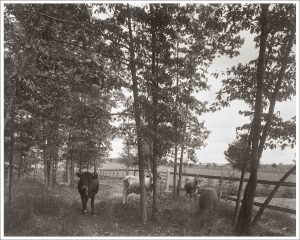 After his father’s death, but while grandmother Kate still used it as a summer house, A.T. Little built a very large new cattle barn with two silos, hay loft, bull pens, milk separating room, etc., to house his prize herd of pure-bred Jersey cattle. These were shown at most major fairs within reasonable distance of the farm, the Western Fair in London, The Canadian National Exhibition and the Royal Winter Fair in Toronto, and the Chicago Fair. Many top honours were won by the herd.
After his father’s death, but while grandmother Kate still used it as a summer house, A.T. Little built a very large new cattle barn with two silos, hay loft, bull pens, milk separating room, etc., to house his prize herd of pure-bred Jersey cattle. These were shown at most major fairs within reasonable distance of the farm, the Western Fair in London, The Canadian National Exhibition and the Royal Winter Fair in Toronto, and the Chicago Fair. Many top honours were won by the herd.
The London Free Press of November 3, 1964, at the time the main house was being sold, carried an interesting article about Hazelden. It said that “London’s first lock-up’ was located on the south-east corner of the property, a log cabin with barred windows that lasted well into the twentieth century”. The older generation today does not recall that structure.
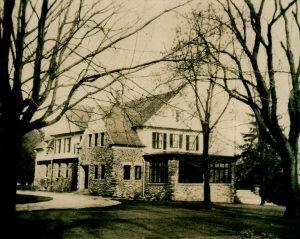 When grandmother Kate Little died in 1927 A.T. took over the property from the estate. Extensive renovations, alterations, and additions were made to the main house to convert it into a year-round permanent residence. It became a big, beautiful family home of some twenty rooms. A.T. and his family moved out to the farm in 1929 and it remained his residence until his death in 1958.
When grandmother Kate Little died in 1927 A.T. took over the property from the estate. Extensive renovations, alterations, and additions were made to the main house to convert it into a year-round permanent residence. It became a big, beautiful family home of some twenty rooms. A.T. and his family moved out to the farm in 1929 and it remained his residence until his death in 1958.
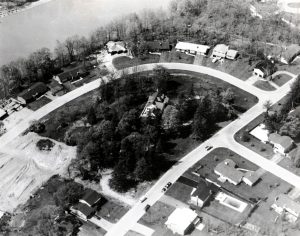 Frank H. Little bought the property from the A.T. Little estate and in the next few years developed it into a splendid suburban residential property. There are now some 160 homes on the development and in addition the family home itself remains and is still occupied today. A number of the street names in the development preserve various Little family names.
Frank H. Little bought the property from the A.T. Little estate and in the next few years developed it into a splendid suburban residential property. There are now some 160 homes on the development and in addition the family home itself remains and is still occupied today. A number of the street names in the development preserve various Little family names.
